 More Days at the Morisaki Bookshop (Days at the Morisaki Bookshop, #2) by Satoshi Yagisawa, Eric Ozawa
More Days at the Morisaki Bookshop (Days at the Morisaki Bookshop, #2) by Satoshi Yagisawa, Eric Ozawa Narrator: Catherine Ho
Format: audiobook, eARC
Source: purchased from Amazon, supplied by publisher via Edelweiss
Formats available: paperback, large print, ebook, audiobook
Genres: books and reading, literary fiction, relationship fiction, world literature
Series: Days at the Morisaki Bookshop #2
Pages: 176
Length: 5 hours and 21 minutes
Published by Harper Perennial, HarperAudio on July 2, 2024
Purchasing Info: Author's Website, Publisher's Website, Amazon, Barnes & Noble, Kobo, Bookshop.org, Better World Books
Goodreads
In this charming and emotionally resonant follow up to the internationally bestselling Days at the Morisaki Bookshop, Satoshi Yagisawa paints a poignant and thoughtful portrait of life, love, and how much books and bookstores mean to the people who love them.
Set again in the beloved Japanese bookshop and nearby coffee shop in the Jimbocho neighborhood of Toyko, More Days at the Morisaki Bookshop deepens the relationship between Takako, her uncle Satoru , and the people in their lives. A new cast of heartwarming regulars have appeared in the shop, including an old man who wears the same ragged mouse-colored sweater and another who collects books solely for the official stamps with the author’s personal seal.
Satoshi Yagisawa illuminates the everyday relationships between people that are forged and grown through a shared love of books. Characters leave and return, fall in and out of love, and some eventually die. As time passes, Satoru, with Takako’s help, must choose whether to keep the bookshop open or shutter its doors forever. Making the decision will take uncle and niece on an emotional journey back to their family’s roots and remind them again what a bookstore can mean to an individual, a neighborhood, and a whole culture.
My Review:
At the end of the first book, Days at the Morisaki Bookshop, it seems as if life is on the upswing for first-person narrator Takako, her eccentric uncle Satoru, and his used bookshop in the Jimbocho neighborhood of Tokyo, a place that is positively chock full of used book stores.
As this second book opens, life seems to be going well for Takoko. She’s moving forward with her life, has a job that she enjoys, a solid and happy and solidly happy romantic relationship, her uncle is happily complaining – which is his way – her aunt seems to have made peace with her uncle and their relationship seems stable and happy.
Even the bookshop seems to be doing well.
Howsomever, just as the first book started out as sad fluff, with Takoko in the depths of depression and eventually working her way out through working at the bookshop, rekindling her childhood closeness with her uncle, rediscovering the joys of reading and slowly becoming involved with the life of the neighborhood, these “more days” at the bookshop transit the path in the other direction.
At the beginning, all seems to be well. But as Takoko observes each time she returns to the bookshop to spend time and help out – the reality is that happiness is slipping out from under them.
Some parts of the various situations can be fixed – but not all of them. And not the saddest of all.
 Escape Rating A-: I picked up More Days at the Morisaki Bookshop because, having fallen in love with the first book, Days at the Morisaki Bookshop, I wanted more, well, days at the Morisaki Bookshop.
Escape Rating A-: I picked up More Days at the Morisaki Bookshop because, having fallen in love with the first book, Days at the Morisaki Bookshop, I wanted more, well, days at the Morisaki Bookshop.
And that’s exactly what I got – and it was beautiful. I’m very glad that I read it – or rather that I gave in to temptation and listened to Catherine Ho as the voice of Takako again because she does an excellent job of embodying the character.
Like the previous book, this is not a story of great doings and big happenings. It’s a quiet story, a book of slices of life, specifically the lives of Takako, her family, her friends, and the Morisaki Bookshop which so much of those lives revolve around.
But, and this is a bit of a trigger warning, the progression of this story is the opposite of the first. It starts high and ends low – even though the epilogue does a good job of letting the reader know that life moves on – even from the depths of grief.
Howsomever, the depths of that grief are very deep indeed. Especially in the excellent audio recording, where it feels as if it’s Takako’s voice telling you just how heartbroken so many of the characters are. It’s very effective, and very affecting. Readers who are already grieving someone close to their hearts will find that part of the story gut-wrenching, cathartic, or both – as this reader certainly did.
 So maybe don’t listen to that part while you’re driving because the urge to cry right along with Takako is pretty much irresistible.
So maybe don’t listen to that part while you’re driving because the urge to cry right along with Takako is pretty much irresistible.
That being said, the whole thing is lovely and charming and filled to the brim with the joy of books and reading and the people who love both – just as the first book was. I’m as happy I read this second book as I was the first – even if it did leave me a bit weepy.
This series, along with Before the Coffee Gets Cold, The Kamogawa Food Detectives, What You are Looking For Is In the Library, The Dallergut Dream Department Store and the upcoming We’ll Prescribe You a Cat are part of a marvelously charming and extremely cozy trend of magical – sometimes with real magic – comfort reads and I’m enjoying it tremendously.
If you’re looking for some cozy, comforting reads, you might want to snuggle up with some of these books too!

 Penric and the Bandit (Penric and Desdemona #13) by
Penric and the Bandit (Penric and Desdemona #13) by 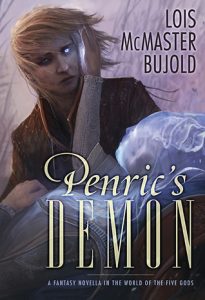 Learned Divine Penric kin Jurald of Vilnoc is ALWAYS the single most dangerous person in the room in any situation because of his magic, his demon Desdemona, and the favor of his god, the Lord Bastard – and has been since the very first novella in this series,
Learned Divine Penric kin Jurald of Vilnoc is ALWAYS the single most dangerous person in the room in any situation because of his magic, his demon Desdemona, and the favor of his god, the Lord Bastard – and has been since the very first novella in this series,  Escape Rating A: After the previous entry in this series, the rather cozy and close to home
Escape Rating A: After the previous entry in this series, the rather cozy and close to home  The Most Human: Reconciling with My Father, Leonard Nimoy by
The Most Human: Reconciling with My Father, Leonard Nimoy by  Fatal Enquiry (Barker & Llewelyn, #6) by
Fatal Enquiry (Barker & Llewelyn, #6) by 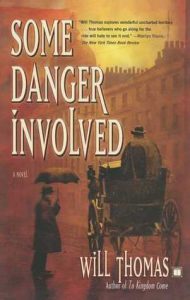 Most of the entries in the
Most of the entries in the  What makes the story rise to an A+, at least for this reader, was the delicious irony of the ending. Nightwine returns to London with deep, well-laid plans to eliminate Barker. Barker, forced to react rather than plan, still manages to maneuver Nightwine to what he believes will be his enemy’s downfall. It’s only after the results of that inevitable confrontation have been dealt with that Barker learns that both he and Nightwine have both been played by someone neither realized was even studying their board – let alone running it.
What makes the story rise to an A+, at least for this reader, was the delicious irony of the ending. Nightwine returns to London with deep, well-laid plans to eliminate Barker. Barker, forced to react rather than plan, still manages to maneuver Nightwine to what he believes will be his enemy’s downfall. It’s only after the results of that inevitable confrontation have been dealt with that Barker learns that both he and Nightwine have both been played by someone neither realized was even studying their board – let alone running it. A Mischief of Rats by
A Mischief of Rats by 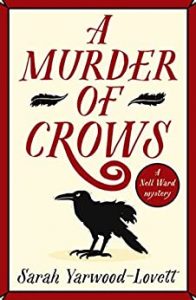 Whichever of her two personas is her alter ego, both of them are entirely too busy during the jam-packed weekend this story takes place.
Whichever of her two personas is her alter ego, both of them are entirely too busy during the jam-packed weekend this story takes place.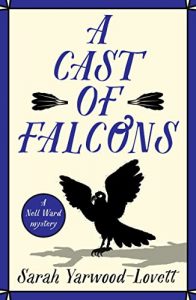 Escape Rating B-: This third book in the
Escape Rating B-: This third book in the  I admit that this is a ‘me’ thing that may not be a ‘you’ thing. Howsomever, for this reader it feels like Nell’s romantic trials and tribulations are a bit over the top, particularly as her rich and aristocratic background – along with her surprisingly functional relationship with her parents – seem to have insulated her from a whole lot of regular stresses and issues to the point where over-the-top is the only direction left.
I admit that this is a ‘me’ thing that may not be a ‘you’ thing. Howsomever, for this reader it feels like Nell’s romantic trials and tribulations are a bit over the top, particularly as her rich and aristocratic background – along with her surprisingly functional relationship with her parents – seem to have insulated her from a whole lot of regular stresses and issues to the point where over-the-top is the only direction left. Lovers at the Museum by
Lovers at the Museum by  The
The 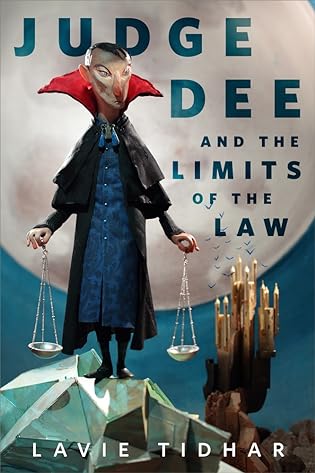 Judge Dee and the Limits of the Law (Judge Dee, #1) by
Judge Dee and the Limits of the Law (Judge Dee, #1) by 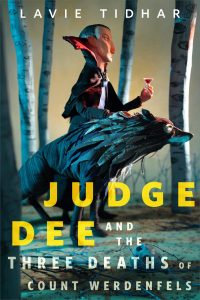 What makes the story fun – more than fun enough that I’ll be picking up the next story the next time I need something short to tide me over an overcommitted calendar – is the first person perspective of poor, put upon, Jonathan. He’s snarky, he’s both world-weary and vampire-weary, but he’s always aware of the side on which his bread is buttered – when he can get any, that is. So his commentary covers the Judge, the law he administers, his opinions and predilections, but also the companionship they provide each other.
What makes the story fun – more than fun enough that I’ll be picking up the next story the next time I need something short to tide me over an overcommitted calendar – is the first person perspective of poor, put upon, Jonathan. He’s snarky, he’s both world-weary and vampire-weary, but he’s always aware of the side on which his bread is buttered – when he can get any, that is. So his commentary covers the Judge, the law he administers, his opinions and predilections, but also the companionship they provide each other.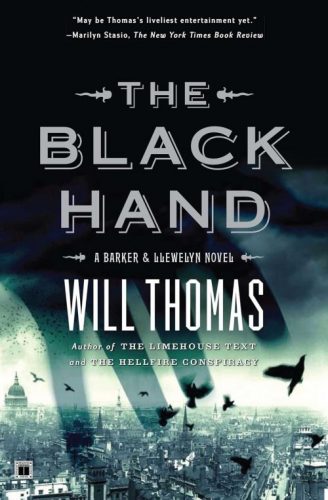 The Black Hand (Barker & Llewelyn, #5) by
The Black Hand (Barker & Llewelyn, #5) by 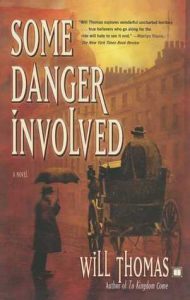 So far, at least, the
So far, at least, the 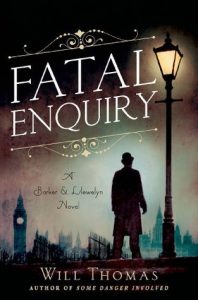 Last but not least there’s the resonance to the now in this story that is very much steeped in the ‘then’. Because while the case may be about the Mafia, what’s behind their advent into London is a debate about immigration and immigrants and just how easy or difficult it should be and just how much enforcement is necessary and which way and upon whom the economic impacts have and will fall.
Last but not least there’s the resonance to the now in this story that is very much steeped in the ‘then’. Because while the case may be about the Mafia, what’s behind their advent into London is a debate about immigration and immigrants and just how easy or difficult it should be and just how much enforcement is necessary and which way and upon whom the economic impacts have and will fall. Because I’ve enjoyed this series so much so far, it was an obvious choice for one of this week’s Blogo-Birthday giveaways – especially as the latest book in the series,
Because I’ve enjoyed this series so much so far, it was an obvious choice for one of this week’s Blogo-Birthday giveaways – especially as the latest book in the series, 
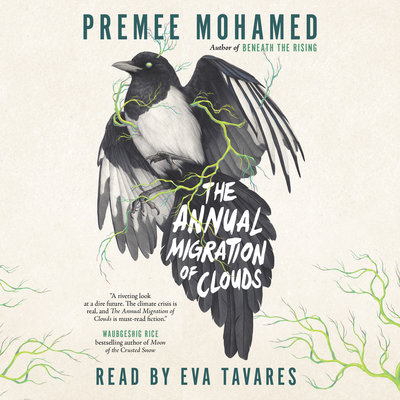 The Annual Migration of Clouds by
The Annual Migration of Clouds by 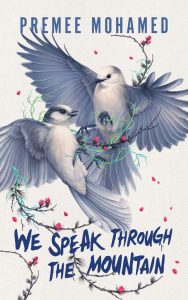 Escape Rating A-: I picked up this book because I read the sequel to this,
Escape Rating A-: I picked up this book because I read the sequel to this, 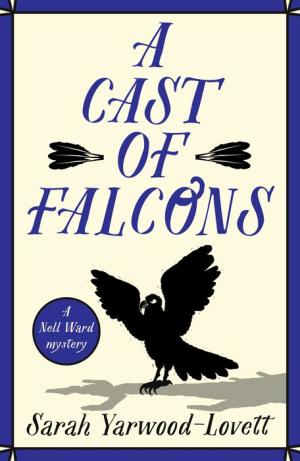 A Cast of Falcons by
A Cast of Falcons by 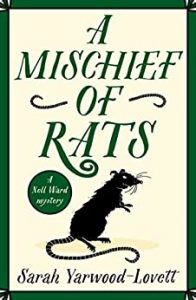 There are plenty of suspects for Hawke’s murder, as the man was a charming, conniving slimeball who left a trail of ruined companies and broken people in his wake – and clearly planned to do the same to Percy, her family, and her family’s properties.
There are plenty of suspects for Hawke’s murder, as the man was a charming, conniving slimeball who left a trail of ruined companies and broken people in his wake – and clearly planned to do the same to Percy, her family, and her family’s properties.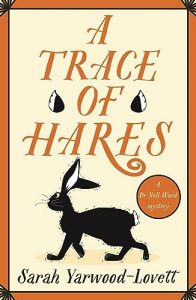 Escape Rating B+: The latest book in this series,
Escape Rating B+: The latest book in this series, 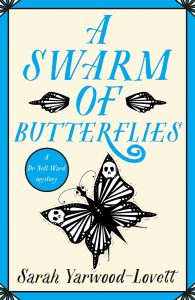 I found Nell to be a likable amateur investigator, and certainly felt for her inability to keep herself out of the investigation. After her previous experience, I wouldn’t have trusted the police either – which makes her decision to date the man who investigated her the first time around a bit questionable. While the ‘torn between two (potential) lovers’ dilemma that Nell is in the midst of isn’t my favorite, it was certainly an interesting twist on the theme to experience it more from one of those two lovers’ points of view instead of Nell’s. I’m hoping that she sticks to the choice she made in future books in the series, but we’ll see.
I found Nell to be a likable amateur investigator, and certainly felt for her inability to keep herself out of the investigation. After her previous experience, I wouldn’t have trusted the police either – which makes her decision to date the man who investigated her the first time around a bit questionable. While the ‘torn between two (potential) lovers’ dilemma that Nell is in the midst of isn’t my favorite, it was certainly an interesting twist on the theme to experience it more from one of those two lovers’ points of view instead of Nell’s. I’m hoping that she sticks to the choice she made in future books in the series, but we’ll see.